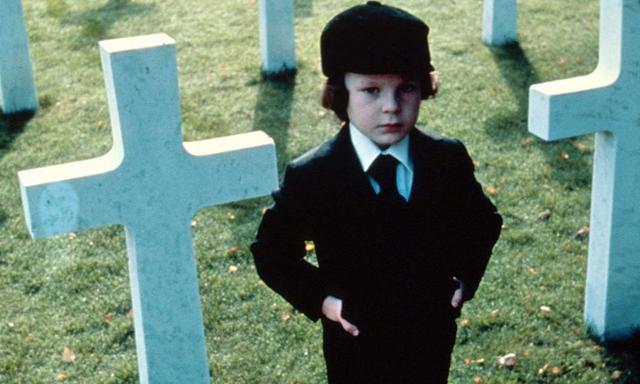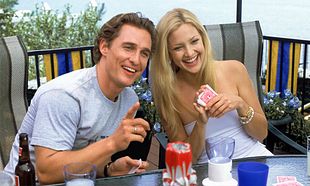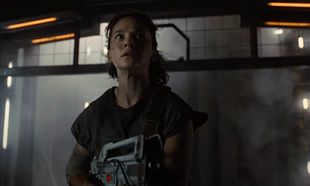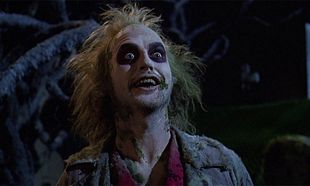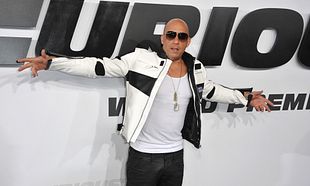While horror may have been more plentiful in the '80s, the previous decade gave birth to some of the most inventive and original entries in the genre.
Not only that, the loosening of restrictions on what filmmakers could and couldn't show meant that boundaries were being pushed in ways that had never been before - often with controversial results. As with the previous features we've done on '80s horrors and '90s horrors, we're focusing solely on 'pure' horrors - so no 'Jaws', no 'Eraserhead', and no 'Invasion of the Body Snatchers'.
We did, after great debate, decided to leave in...
10. 'Don't Look Now' (1973)
While 'Don't Look Now' may teeter on the edge of horror and thriller, there's no denying whatsoever that the final scene more than pushes it over into horror. It's a true Grand Guignol ending, with Donald Sutherland's throat slashed open by a horrifying serial killer in a red hood - but it also has the aura of dread and tension surrounding it, not to mention the supernatural elements that were added in by both the setting of Venice and Nicolas Roeg's clever editing and stylistic choices.
9. 'Carrie' (1976)
Speaking of Grand Guignol endings, Brian DePalma's adaptation of Stephen King's 'Carrie' is another prime example. Again, it's all about the cheap blood - but what DePalma does so elegantly is that he manages to build up a believable character in Sissy Spacek's titular character. She's a young woman who's brutalised and traumatised - literally from the opening scene - and the film acts like a time-release bomb, just waiting for her to explode. When it finally comes, it's every bit as horrifying and satisfying as you'd imagine. Just don't mention the Chloe Moretz remake.
8. 'The Wicker Man' (1973)
"Oh God! Oh Jesus Christ!" The Wicker Man kicked off a short-lived subgenre of horror known as folk horror, and was identified by its use of the natural countryside as a backdrop and the idea of the land being as much an ominous force as anything else in the film. It's something that's been revitalised, most recently in Irish psychological horror 'Without Name', Gareth Evans' Netflix movie 'Apostle', and Ben Wheatley's psychotic 'A Field In England'. Here, in 'The Wicker Man', you have Christopher Lee leading a group of pagans on a remote island off the coast of Scotland and the great Ed Woodward sent to investigate them. The ending, of course, has passed into legend. Any time you see a burning statue, it's a reference to this.
7. 'The Omen' (1976)
Like a lot of directors, Richard Donner gained recognition by coming up through the horror genre. 'The Omen' is easily one of the most recognisable horrors of the decade and the funny thing is that Donner was also responsible in part for one of the most recognisable horrors of the '60s - although it was on TV. 'Nightmare At 20,000 Feet', one of the most iconic episodes of 'The Twilight Zone', was directed by a young Richard Donner. Back to 'The Omen' - a creepy child in any kind of horror is always going to draw comparisons with Damien, but it was the way in which Donner shot the little boy that made it so unsettling was that he never let on that the child was evil - until the very end.
6. 'Suspiria' (1976)
If there's one thing 'Suspira' was known for, it's blood. Pints and pints of fake blood were used on 'Suspiria', but what's often overlooked is just how beautiful the film looked. Directed by Italian maestro Dario Argento and shot using a colouring process that was also used on 'Gone With The Wind' and 'The Wizard Of Oz', 'Suspiria' is designed to look like a sort of fantasy world. In fact, Argento specifically made the sets seem bigger than Jessica Harper's frame so as to accentuate both the feeling of helplessness and that the dance academy she was in was growing around her. Frequently disturbing, spectacularly violent, 'Suspiria' was arguably the first modern intersect between arthouse and horror.
5. 'Dawn of the Dead' (1978)
When reviewing 'Dawn of the Dead' on its release, Roger Ebert called it "gruesome, sickening, disgusting, violent, brutal and appalling." He then followed that statement up by saying it was also "brilliantly crafted, funny, droll, and savagely merciless in its satiric view of the American consumer society." Really, that's all that can be said about 'Dawn Of The Dead'. It's overbearingly violent and revels in just how much blood and guts it can churn up, but it's the intelligence and ferocity of its satire that makes it the greatest zombie horror film ever made. 'The Walking Dead', 'Resident Evil', 'REC', '28 Days Later' - all of them aren't fit to tie the boots of George A. Romero's crowning achievement.
4. 'Alien' (1979)
While we said at the top of the article that we were only doing "pure" horrors, Alien passes muster on the basis that it is absolutely 100% a pure horror film. In fact, we wrote an entire article on how it effectively changed the horror genre as we know it. Read that, come back here and watch this clip.
3. 'Halloween' (1978)
Although John Carpenter's 'Halloween' can't take credit for creating the slasher genre - that honour goes to the 1974 Canadian horror film, 'Black Christmas' - it absolutely can take credit for jump-starting John Carpenter's career, introducing Jamie Lee Curtis to mainstream movies, popularising the slasher genre as we know it today, creating an entire musical genre with synthesisers, and making sure that nobody ever looked at a James Kirk mask in the same way ever again. With a small budget and a head full of imagination, Carpenter managed to create the defining film of the slasher genre and traumatised an entire generation in the process. The sequels that followed never lived up to the promise of the original, sadly, but what a film and what an achievement.
2. 'The Exorcist' (1973)
In order to illicit the type of response he wanted from his actors and to get the look of genuine shock, William Friedkin reportedly fired off a starter gun before shooting a scene and - on a separate occasion - slapped one of the actors before rolling the camera. When you look back over 'The Exorcist' with this in mind, it doesn't do anything to dampen the effect of the film. If anything, it only heightens it and shows just how far Friedkin was willing to push his cast. The results are on the screen and 'The Exorcist' remains the hysterical masterpiece of our collective nightmares.
1. 'The Texas Chainsaw Massacre' (1974)
It's hard to quantify just how shocking 'The Texas Chainsaw Massacre' was on its initial release. Tobe Hooper placed an opening crawl of text at the start of the film that falsely claimed the story was real. Moreover, Hooper had studied the murders of Ed Gein and Elmer Wayne Henley & Dean Corll, known collectively as the Houston Mass Murders. Before beginning work on 'Alien', Ridley Scott and Walter Hill had a private screening of the film and found themselves utterly shocked by it. As Scott tells it, Hill couldn't even finish a meal he'd brought with him into the private screening room. Although Tobe Hooper never replicated the success he had with 'The Texas Chainsaw Massacre', it doesn't matter. The film is such a singular work that you can never really replace it - you can only emulate it. Modern horror, as we know it today, was born when Leatherface stepped out into the sunlight.
